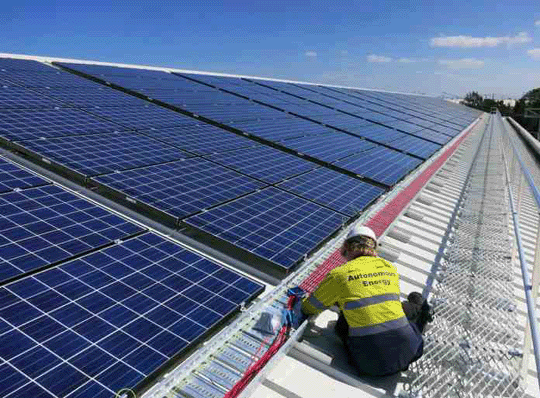More than 130,000 solar households in Victoria will benefit from a steep increase in their solar feed-in tariff in 2017/18, and will receive a minimum 11.3c/kWh for their exports back to the grid, up from 5c/kWh currently.
The hefty increase announced by the Essential Services Commission on Tuesday is the result of a big rise in wholesale prices, and the Victoria Labor government’s instruction to include an implicit carbon price, network benefits and environmental benefits into the tariff.
 Wholesale market prices have jumped in recent months, thanks mostly to speculation and confirmation of the closure of the Hazelwood brown coal generator in one month’s time.
Wholesale market prices have jumped in recent months, thanks mostly to speculation and confirmation of the closure of the Hazelwood brown coal generator in one month’s time.
The calculation for wholesale prices is based on forecast average pool prices of $77.82/MWh, compared to just last year, with another 3.5c/kWh added for network, climate and other benefits.
But some are already suggesting that the wholesale price calculation – made by ACIL Allen – is selling solar households short.
Greens MLC Greg Barber referred to analyst David Leitch’s weekly Know Your NEM column, which puts forecast pool prices in Victoria for that period at $99/MWh.
“The regulator is undercooking the wholesale electricity price estimate, just like they did last year,” Barber said.
“If they looked at baseload futures in the real world, instead of hokey modelling, solar homes and businesses would be getting an extra two and a half cents per kilowatt-hour.”
Still, despite that shortfall, the recommended tariff is now vastly higher than any other state, thanks to the inclusion of other factors, even if the ESC was accused of failing to recognise the environmental and full network benefits of the state’s near 1GW of rooftop solar.
On top of the effective wholesale tariff of 7.78c/kWh, a premium for solar (because it produces during the day) has been added, along with avoided loss factors on transmission lines, which takes the overall price to 8.7c/kWh.
On top of this comes the 2.5c/kWh benefit calculated on the “avoided cost of carbon.” The Victoria government wanted the ESC to go further and include an estimate of avoided environmental costs, such as air pollution, but the ESC insisted it was unable to produce meaningful data.
“We remain of the view, therefore, that the Commission is not able to determine the avoided human health costs attributable to a reduction in air pollution caused by small renewable energy generation,” the ESC says.
The ESC has also been asked to set varying tariffs, depending on the network benefit for local grids. But it says it has set a flat rate for the first year to “allow sufficient time for consultation with energy retailers on the implementation of multi-rate feed-in tariffs in future years.”
Minister for Energy, Environment and Climate Change Lily D’Ambrosio said the new tariff meant that households with solar panels are more fairly compensated for the power they send back into the grid.”
“The former Coalition Government reduced the amount Victorian solar households received to 5 cents per kilowatt hour and voted against the bill to make this change,” she said in a statement.
“This is a great win for the 130,000 solar households all over Victoria, we promised a fairer system and that’s exactly what we have delivered. ”
Solar Citizens senior campaigner Shani Tager said she hoped other state-based regulators would follow Victoria’s example.
“We have been campaigning for a fairer price for solar following some outrageous efforts by the big power companies to rip Australian solar producers off, it is encouraging to see that the Victorian Government and the ESC have sensibly decided to recognise the contribution that solar producers make.
“Solar owners are up against hugely powerful companies and corporations who are trying to make obscene profits from the solar they produce – solar owners want, and deserve, a fair go for the contribution they make to powering Australia.”










